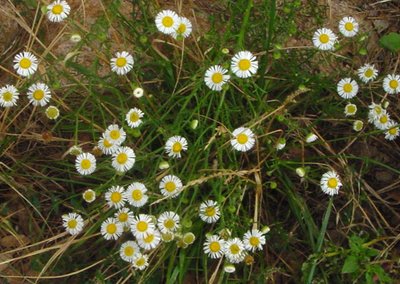
Not fleabane, however. This hardy fringed daisy is a real survivor, with more than 2 dozen species in Arizona. In the spring, creeping fleabane predominates in Prescott; the low-growing species spreads as strawberries do, putting out runners that start new plants. In fact, one wildflower landscaper recommends using the creeping variety as ground cover in the highlands.
The late summer fleabane pictured above is taller and I think these plants are more attractive.

No way can you set your watch by this tufted four o'clock -- the pretty little thing doesn't open until dusk and you're likely to miss the blossoms, which drop off during the night, leaving only the white bracts (below.) I hadn't realized how outstanding the plants can be until this summer as I have been taking more walks late in the day.

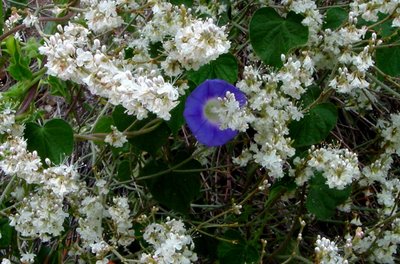
With 53 species of buckwheat (eriogonum) in the state, I suppose I can't expect my assorted handbooks to provide pictures of every kind -- but you would think that this fluffy white flower that blooms all over the Prescott area would land in someone's wildflower book. If it has, I have yet to find it, so my ID is: some sort of buckwheat. The wild morning glory hiding in the middle makes a nice color contrast.

Suddenly, in the middle of the past week, the local mallows popped open. A welcome sight, tho they aren't quite as spectacular as similar globe mallows are down in the desert in spring. A creeping version of this hollyhock cousin grows over in Prescott Valley.

Horsetail or poison milkweed is very common around town right now. That may explain my recent problem with the milkweed caterpillars (scroll down to the August 13 post to get the full story.) I had wondered why moths were laying eggs on butterfly weed which isn't very common hereabouts; obviously, this plant is their primary food source. Horsetail milkweed is poisonous to livestock, hence its name.
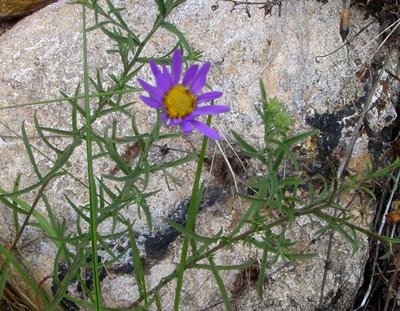
The trouble with our wild asters is that the flowers are too scattered to be showy. I've tried to cut the stems back to encourage more blossoms, but the plants defy my best laid plans. Wish the blossoms would cover the stems like the white asters which open soon.
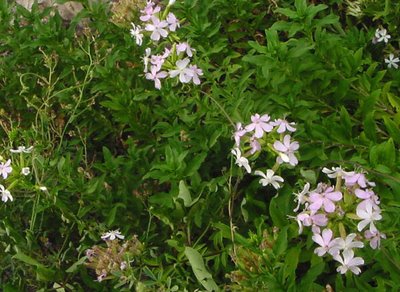
Bouncingbet was introduced from Europe as a garden plant but, like many others, escaped to become established as a wild flower. The Sharlot Hall grounds have a garden of these flowers. Weeds of the West calls bouncingbet poisonous but "unlikely to be eaten by livestock."
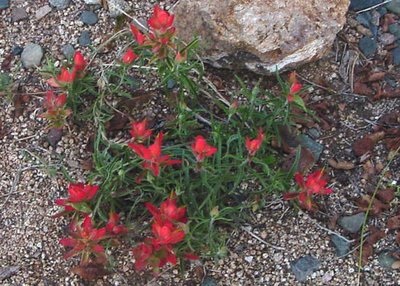
Last but by no means least: Indian paintbrush, an opportunistic rather than strictly a summer bloomer. All it takes is water and paintbrush is happy to blossom at almost any time. This particular specimen is in my yard and I'm surprised at how well it is doing without a host plant to supply water and nutrients. "Indian paintbrush seedlings grow poorly or won't grow at all if the plants fail to find a host. Like most hemiparasites, they lack a well-developed root system," according to 100 Roadside Wildflowers of the Southwest Woodlands.
Note: In addition to the two books I've already mentioned, two other very useful handbooks are Plants of Arizona and 100 Desert Wildflowers. They can be bought at most local bookstores, which is why I haven't linked to Amazon.





4 comments:
The blue aster photo against the rock was terrific!
Thanks for the wildflower show!
Really pretty.
Gorgeous photos and wonderful descriptions! Looking at pictures of wildflowers: what a pleasant way to end my day.
Post a Comment